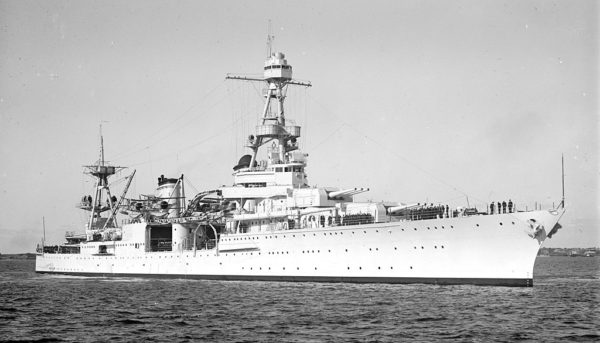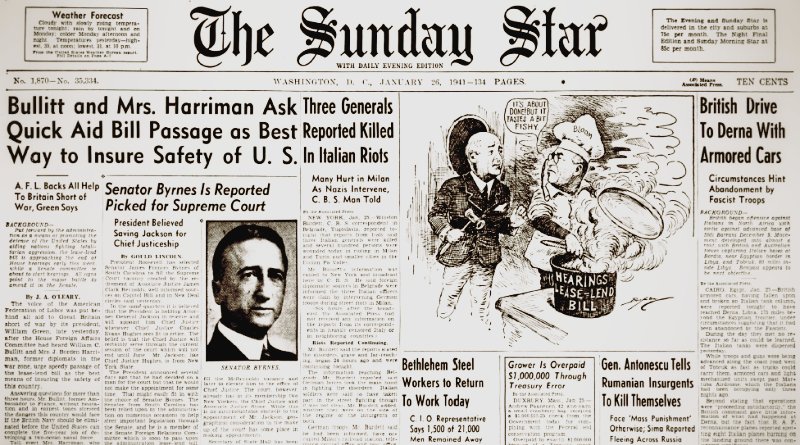World War II Chronicle: January 26, 1941
Click here for TODAY’S NEWSPAPER
Destroyers for Bases, Part 2
The front page (below the fold) mentions an American base under construction in Newfoundland (then a dominion of the United Kingdom and not yet part of Canada). Yesterday we briefly discussed the “destroyers” portion of the Destroyers For Bases agreement between the United States and Britain yesterday; Today we cover the “bases” aspect. In return for 50 World War I-era destroyers, we got 99 years of rent-free leases where we could build bases, such as Newfoundland’s Stephenville Air Base (Ernest Harmon Air Force Base during the Cold War).
Germany conquered once-mighty France in just 46 days, and war planners were concerned that a (so-far) unstoppable Adolf Hitler could use French territories throughout the Western Hemisphere to stage attacks on the United States. A little over 100 nautical miles southeast of Stephenville and just off the coast of Newfoundland sat the French islands Saint Pierre and Miquelon. If militarized, these strategic islands would place New England under Luftwaffe bomber cross-hairs — 850 miles from New York City and 1,000 from Washington, D.C.. But you can’t put a base there if the enemy already beat you to it. We can certainly debate the constitutionality of Pres. Franklin D. Roosevelt’s policies, but from a strategic standpoint, one could argue that sending 50 antique destroyers to the British was a small price to pay for effectively keeping Hitler on his side of the Atlantic.
Looking back, Hitler’s vision for jet fighters, ballistic missiles, cruise missiles, and a intercontinental bomber certainly seem wasteful. While impressive, they were decades ahead of their time and their marginal effect on the war didn’t justify the tremendous expense. The ambitious Amerikabomber program was conceived in the late 1930s, but it wasn’t seriously pursued until after the United States began building bases on British sites. So it’s quite possible that had we not built these bases, thus deterring Germany from establishing a foothold in the Western Hemisphere, there would be no need for futuristic bombers with a 7,000-mile range. Germany could have devoted scarce manpower and resources to more effective projects that would have made an impact on the war.
Treasure ship

Who doesn’t like a story about gold? After transiting the Panama Canal, the cruiser USS Louisville (CA-28) had wrapped up a series of South American port calls in early January when her captain received orders that instead of heading for home, they were set course for South Africa on a special mission. Once underway, the crew was excited to learn they would be hauling millions of dollars of gold.
They arrived at Simonstown to find gold “stacked up like cordwood” — and virtually unguarded. A sailor could only carry one bar at a time, so the crew (well over 600 officers and men during peacetime) spent 13 hours hand-carrying around 220 tons of gold into the ship’s magazine after an officer catalogued their serial numbers (it’s a safe bet that nearly every sailor on the ship was formulating a plot to make off with a portion of the loot). As they steamed for New York at 25 knots, the skipper ordered the crew to fly giant American flags, lit by floodlights at night to ward off submarines. 17 days later they safely reached the Brooklyn Navy Yard and unloaded their precious cargo, alongside the battleships USS North Carolina and USS Iowa, still under construction.
Evening star. (Washington, D.C.), 26 Jan. 1941. Chronicling America: Historic American Newspapers. Lib. of Congress.
https://chroniclingamerica.loc.gov/lccn/sn83045462/1941-01-26/ed-1/
